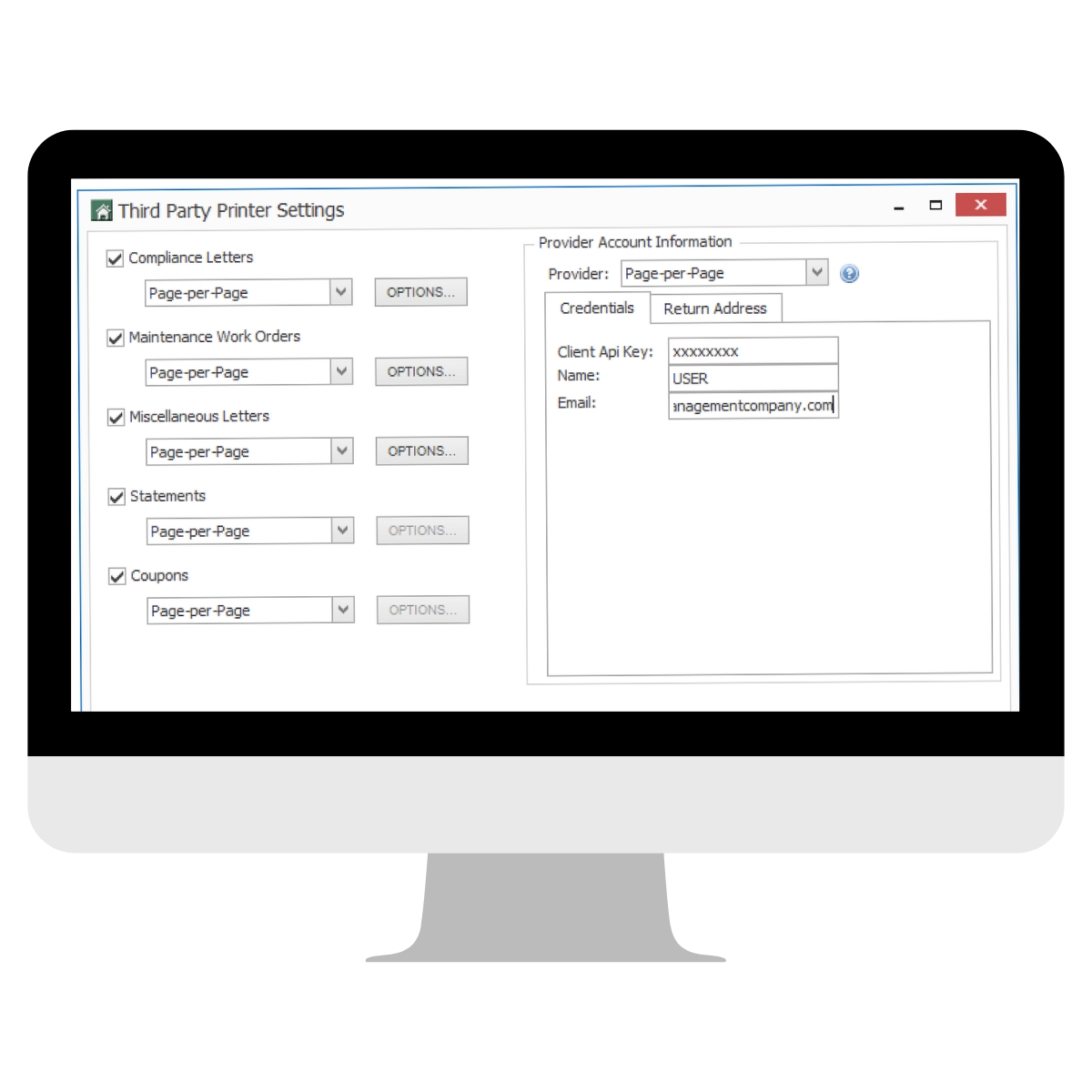Communication plays a key role in the efficiency and success of any HOA. It promotes transparency, keeps homeowners informed and enables community participation. By contrast, when communication is lacking, it creates confusion and apprehension around otherwise simple issues.
For many HOAs, communication often happens haphazardly. Perhaps a board member shoots off a stray email on a whim. Or a flyer announcing an event gets posted by the front gate. Few HOAs have taken a hard look at what they want to communicate with homeowners, how they want to do it, what channels they’ll use, and the frequency with which they’ll do it.
If more HOAs took a proactive approach to communication (not only with homeowners, but with fellow board members as well), they could greatly improve the community experience. We’ll walk you through the steps of crafting a legitimate communication plan, so that you can avoid the pitfalls that stem from unstructured, one-way communication.
- Define What Needs to be Communicated
The 4 W’s of an HOA communication strategy are ‘what,’ ‘where’ and when’ and…’how’ (we know. We’re cheating). To kick us off, ask yourself what type of information you want to deliver? This may vary between HOAs. Boards are regularly holding meetings and making decisions that affect the greater community, so you’ll need to decide what among all this information should be shared.
On the other hand, some homeowner communications, like violations and late payment notices, are compulsory (a.k.a. no brainers), and will be sent no matter what. We’ll circle back to them in the ‘how’ and ‘where’ sections.
Information you may want to proactively communicate includes:
- Meeting times & cancellations
- Board meeting decisions pertaining to:
- Landscaping
- Paving
- Painting
- Newly adopted regulations
- Changes in state law that affect homeowners
- Community event dates and times
- Amenity closures/overall status
- Announcing new neighbors
- Welcome letters to new homeowners
- Election news:
- Voting/ballot instructions
- Candidate qualifications
- Election results
This is not an exhaustive list by any means, and we recommend you convene board members and homeowners to collectively decide what kind of information they will want to be notified of.
- Define How You Will Communicate
Once you’ve decided what to communicate, you’ll want to consider how you’ll do it. Bear in mind, when we say ‘how,’ we don’t mean which channel (which we’ll cover next). We mean how the HOA will present itself when it communicates. Especially when it comes to more unpleasant things, like violations and notices, which are known to ruffle feathers.
For example: What’s your process for mailing violation notices? Do you print off a harshly worded template, stuff the envelope and ship it out in-house with your own staff? (Please, don’t do that… Use a dedicated HOA mailing company to outsource all of your standard homeowner communications. It reduces mailing errors, ensuring the homeowner receives it, on time, every time).
Being dry and impersonal is one (candidly bad) approach. Try this instead: communicate with kindness and personality. Why not give the HOA its own voice and style? You can put more thought into the design and recipient experience. Maybe when you send that violation notice, you also include a Hershey’s kiss, with a handwritten note assuring there’s no ill will, despite the violation being issued. The ‘how’ of communication is an excellent place to tend to relationship management.
- Decide Where You Will Communicate (Which Channels & Platforms)
The next step in is defining the channels and platforms on which you’ll communicate — with both fellow board members and homeowners. The key is to make sure each method is fit for the specific group of people you are trying to reach.
Selecting Board Member Communication Channels
When communicating with fellow board members, there are countless channels to choose from — email, social media, text, etc. However, it can quickly become disorganized and overwhelming. That’s why you should choose one main method of communication between board members, and one backup.
For example: If you haven’t received an email response in 3 business days, protocol should dictate that your next step is to call the board member.
Some methods are preferable to others. Phone calls are great for connecting on a more personal level, but aren’t ideal for discussions with more than one person, and can’t be referred to unless recorded. The best approach is to utilize email or a dedicated forum on your community website, when not engaged at in-person meetings.
Selecting Homeowner Communication Channels
While having a singular method of communication between board members is essential for staying organized, the opposite is true when it comes to homeowners. In fact, 58% of boards find that using 4-6 channels to communicate is the most effective.
Some of the best ways to communicate with homeowners include:
72% of HOAs use email to communicate with their homeowners. Not surprising, as this method is less costly and gives boards the ability to reach a large group of people instantly. You can increase your open rate with enticing subject lines like, “Big News for the Neighborhood” or “Congratulations Are In Order.” On the other hand, emails are easy to miss if they’re going to an inbox the homeowner doesn’t check regularly. This is why email must be supplemented with other channels.
Paper Mail
Regulations often mandate that some communications be physically mailed, and for good reason. In addition to statements, ballots and mandatory notices, you can also use paper mail to send fun communications, like neighborhood newsletters and thank you notes. Sending newsletters in the mail may seem old school, but 56% of people say that receiving mail is a ‘real pleasure’. They also feel much more personal than digital methods. Businesses, like Page Per Page, specialize in communications for HOAs and have the ability to design professional and eye-catching mailings. Interested in thinking outside the box? Review our list of fun HOA mailing ideas to spice up homeowner communication.
Community Website
One of the biggest benefits of a community website is that it can promote two-way communication. Not only can it give the board the ability to make announcements and offer homeowner resources, it can give homeowners an outlet to ask questions or voice concerns in a controlled environment. The board then has the opportunity to address any issues head-on. When looking for a community website, consider companies like Page Per Page that promote two-way communication with features like forums, calendars and messaging.
Social Media
It’s hard to ignore how impactful social media is, especially since 45% of the population use it daily. However, it’s not the most effective method of communication in an HOA. It’s important to remember that you cannot control what residents say. A simple issue can quickly snowball in an unmoderated social media forum, fanning the flames of homeowner discontent. We strongly recommend against using social media as a homeowner communication channel, as it also breeds privacy concerns.
Text
Few HOAs have adopted the use of SMS text, however, the numbers can’t be ignored. With an open rate of 98% and a 209% higher response rate than phone, email, or Facebook, text is proving to be one of the most effective methods to get your message across. To avoid the complex process of setting up SMS text, consider text platforms built to make the process easy.
Phone
While phone calls can be time-consuming, it’s a communication method that feels personal. Talking with homeowners one-on-one fosters long-term relationships and can make your message or announcement more impactful.
Board Meetings
Much like a personal phone call, board meetings give you the ability to speak with homeowners directly, at a set place and time. While this provides great value, the challenge is getting enough attendance to have your message heard. Consider catering the meeting or doing a giveaway/raffle that will encourage them to participate.
- Define When You Will Communicate
After you determine your preferred communication channels, the next step is to determine how often you’ll use them. HOAs fall short when they build communication strategies on a situational basis. For example, some only make contact if a need or issue arises. In fact, 46% of HOAs find that approach to be ineffective.
Frequency for Homeowners
Touching base with your residents on a deliberate cadence reminds them that the HOA is present and active, without being overbearing. At your next board meeting, through an HOA website forum, or through paper ballot, consider asking homeowners what their expectations are for ongoing communication. Ideally, you should set a frequency for each selected channel.
For example:
- Phoning residents 4x/year
- Sending newsletters 1x/month
- Holding meetings 1x/two weeks
- Updating the website every other day
- Emailing 1x/week
Frequency for Board Members
HOA boards that communicate at least once a week feel that they are 73% more effective in their initiatives than associations that do not. With that said, most HOA board members are volunteers so it’s important to keep their time commitment in mind. Consider setting up a recurring Zoom meeting so all members don’t have to physically be there but they can still touch base. The more you remain in contact with each other, the more informed and aware you are of neighborhood business, which ultimately leads to better decision-making.
Choose Your HOA Communication Partner
While communication is one of the most vital aspects of any HOA’s success, it’s also time-consuming. Industry experts have all agreed that Community Managers who print and pack HOA mail in-house not only appear unprofessional, but are not making a sound investment of time and resources. Bottom line: Well-rounded HOA communication can quickly become taxing on you and your staff. That’s why outsourcing some of the work to a trusted partner like Page Per Page can be a game-changer for both the board and community.
From professional mailings to community websites, having a partner like Page Per Page who creates a singular hub for all HOA communication can greatly streamline homeowner communication efforts. Put your trust in a partner that not only specializes in community associations, but takes a great deal of the work off your shoulders.





